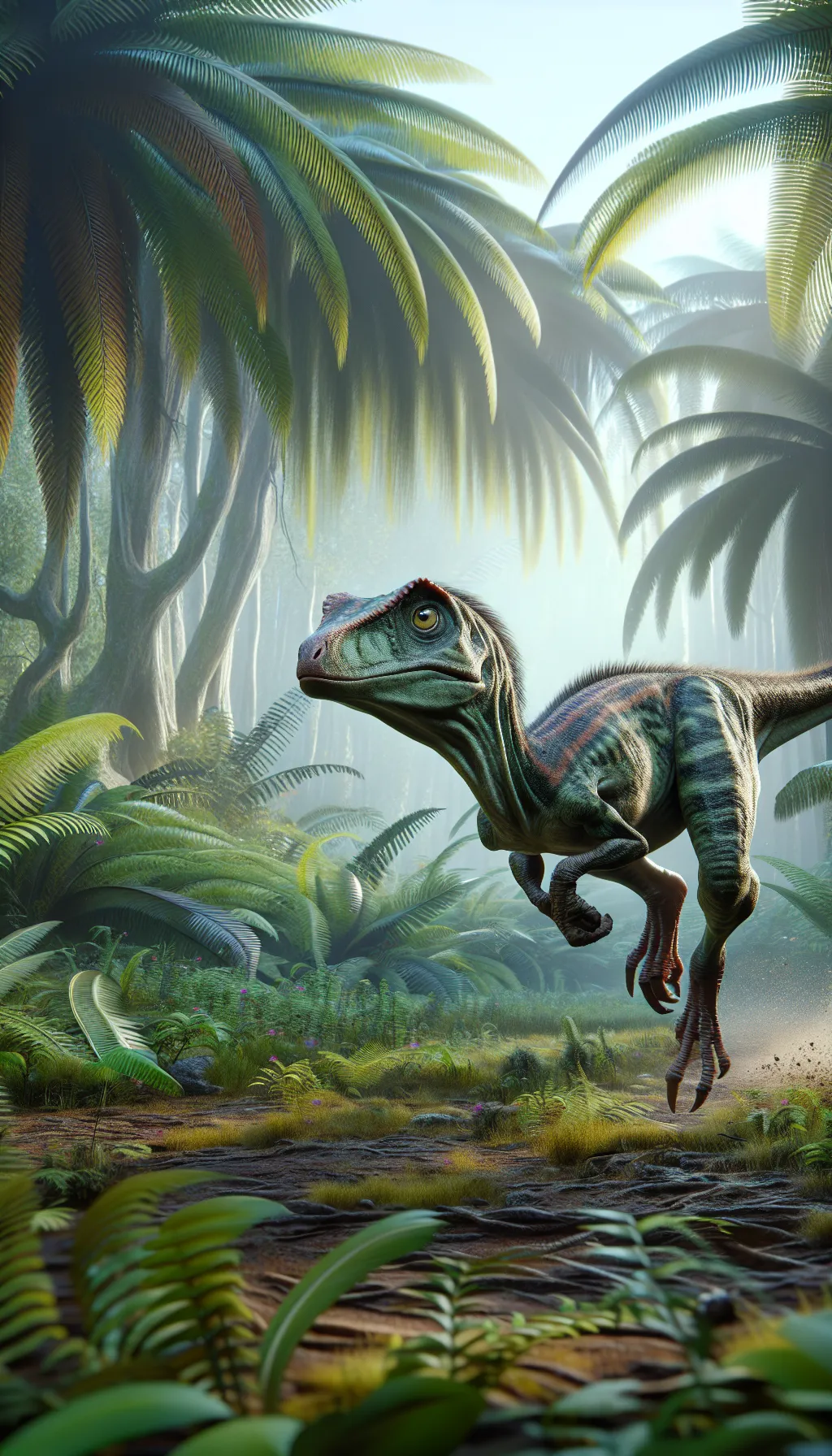The Procompsognathus
The Procompsognathus, also known as the "tiny terror," is a small carnivorous dinosaur that roamed the Earth during the Late Triassic period. It was about the size of a chicken, with slender limbs, sharp teeth, and a long tail. This creature typically hunted small insects, lizards, and other small prey.

| Procompsognathus | |
|---|---|
| Size | 3 feet long (approx. 1 meter) |
| Weight | Unknown |
| Speed | 35mph (56km/h) |
| Key Strength | Speed and Agility |
| Biggest Weakness | Lack of size/strength |
| Scientific Name | Procompsognathus |
| Family | Coelophysidae |
| Habitat | Terrestrial |
| Geography | Late Triassic Period |
| Diet | Carnivore |
| Lifespan | 4 years - 6 years |

The Procompsognathus
The Procompsognathus, also known as the "tiny terror," is a small carnivorous dinosaur that roamed the Earth during the Late Triassic period. It was about the size of a chicken, with slender limbs, sharp teeth, and a long tail. This creature typically hunted small insects, lizards, and other small prey.
Fun Fact: Procompsognathus is believed to have lived in social groups, hunting and moving together in packs, similar to modern-day wolves.
| Procompsognathus | |
|---|---|
| Size | 3 feet long (approx. 1 meter) |
| Weight | Unknown |
| Speed | 35mph (56km/h) |
| Key Strength | Speed and Agility |
| Biggest Weakness | Lack of size/strength |
| Scientific Name | Procompsognathus |
| Family | Coelophysidae |
| Habitat | Terrestrial |
| Geography | Late Triassic Period |
| Diet | Carnivore |
| Lifespan | 4 years - 6 years |
Procompsognathus Matchups
We use AI to simulate matchups between the Procompsognathus and other animals. Our simulation considers size, strength, and natural predatory behaviors to determine the most likely outcome.

Can't find the Matchup you want?
Create Your Own MatchupProcompsognathus: Diet, Predators, Aggression, and Defensive Behaviors
What did Procompsognathus eat?
Procompsognathus were small carnivorous dinosaurs that likely preyed on insects, small reptiles, and possibly even small mammals. Their diet consisted mainly of small animals that they could easily catch and consume.
Did Procompsognathus have any predators?
As small dinosaurs, Procompsognathus were likely preyed upon by larger carnivorous dinosaurs such as Dilophosaurus or Ceratosaurus. Being small in size, they would have been vulnerable to attacks from larger predators in their ecosystem.
Were Procompsognathus aggressive?
Procompsognathus are believed to have been relatively passive and may have relied on their agility and speed to escape threats rather than engaging in aggressive behavior. They were likely more focused on hunting for food and avoiding predators rather than actively seeking out confrontations.
Did Procompsognathus fight?
While Procompsognathus may have engaged in territorial disputes or competition for food, they were not known for engaging in physical fights with each other. Their small size and agility may have allowed them to evade confrontations rather than resorting to physical combat.
How did Procompsognathus defend themselves?
Procompsognathus likely relied on their small size, speed, and agility to defend themselves against predators. They may have used their ability to quickly dart away from potential threats or hide in small crevices to avoid danger. Additionally, their sharp teeth and claws could have been used for defense if necessary.
What was Procompsognathus' biggest weakness in a fight?
One of the biggest weaknesses of Procompsognathus in a fight would be their small size and fragile build. They would be easily overpowered by larger predators and may not have had the physical strength to effectively defend themselves in a physical confrontation. Their best defense would likely be to flee from potential threats rather than try to stand their ground in a fight.
Fun Fact: Despite its small size, Procompsognathus was a fast and agile predator, capable of darting around its prey with ease.
Fun Fact: Fossil evidence suggests that Procompsognathus had a unique structure in its ankle joints that allowed it to make quick and precise movements while hunting or evading predators.











